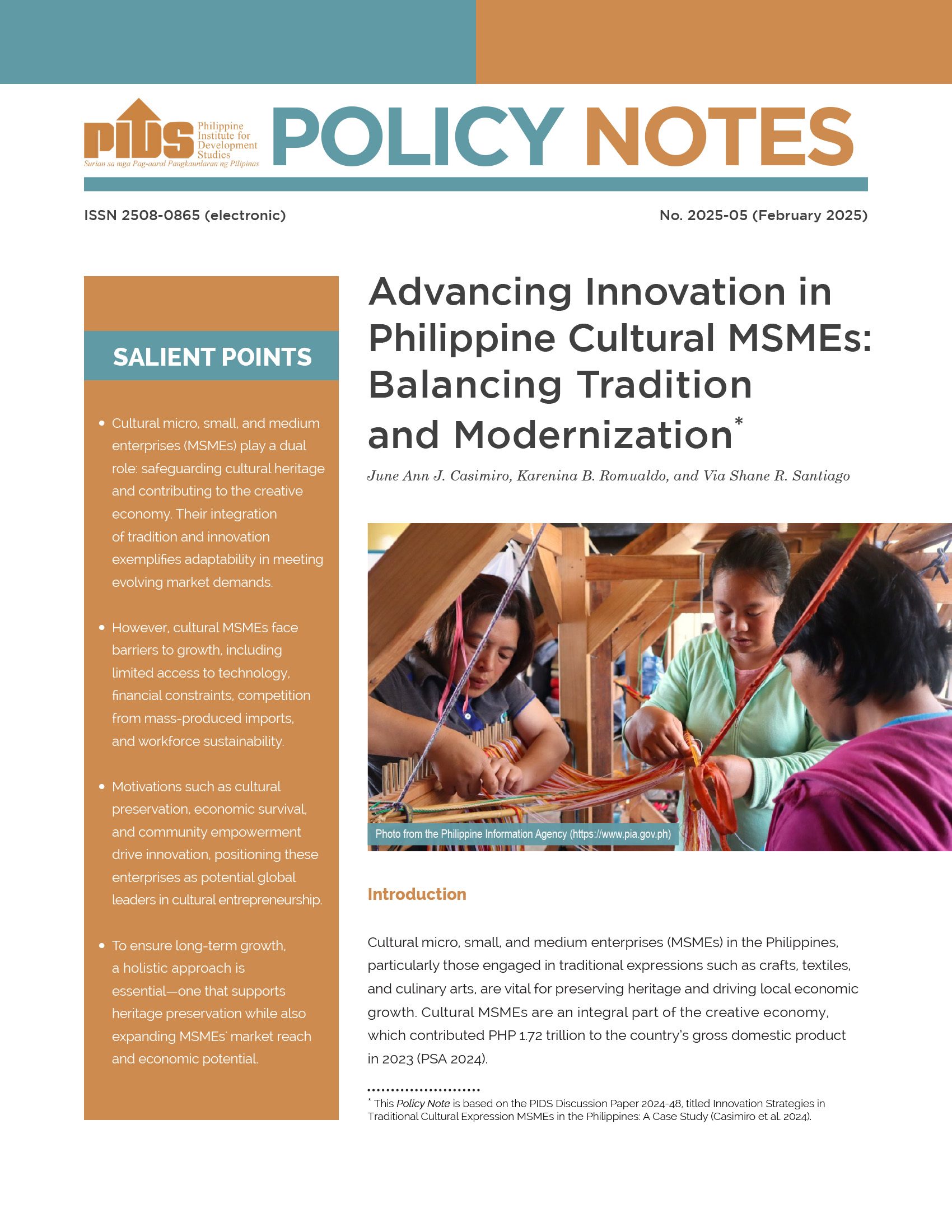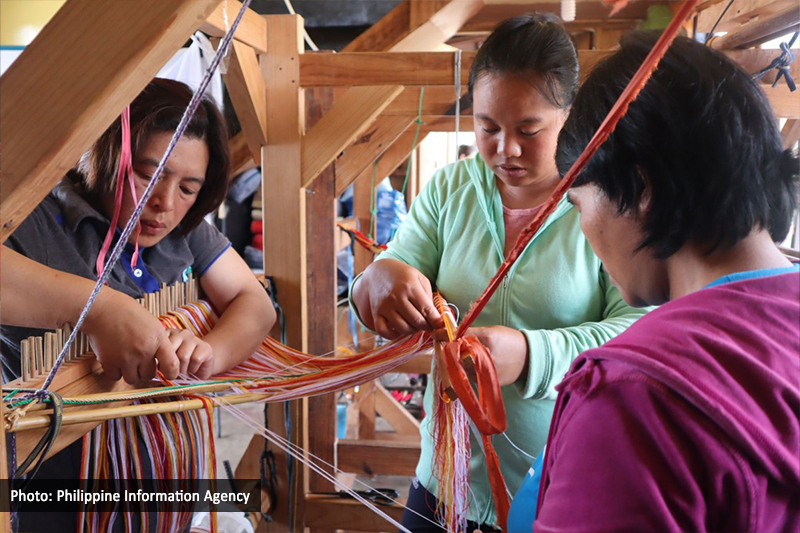Two years from now, the Philippines and other ASEAN members will be moved toward a single market and production base under the ASEAN Economic Community (AEC) by 2015. However, the readiness of our small and medium enterprises (SMEs) for this regional economic integration draws a big question mark.
PIDS Vice President Rafaelita Aldaba`s study raises concerns over the weak performance of SMEs despite regional measures implemented in the ASEAN Strategic Action Plan for SME Development 2010-2015 (ASAPSD) and the ASEAN Policy Blueprint for SME Development 2004-2009 (APBSD).
A perception survey was conducted to evaluate the impacts of these frameworks. Four SMEs and one government-member of the SME Working Group were surveyed to evaluate the Philippine implementation. Both groups scored low in average effectiveness.
Majority of the respondents perceived that the APBSD had limited impact on facilitating SMEs` access to information, market, human resource development and skills, finance, and technology. Likewise, the ASAPSD has been perceived to have little concrete impacts in terms of enhancing competitiveness and flexibility of SMEs in moving toward a single market and production base.
In the study, the weak performance of SMEs has been attributed to the large number of barriers that SMEs face, particularly poor access to finance, technology, and skills, as well as information gaps and difficulties in product quality and marketing. Although there are government institutions or agencies responsible for development and technology support of SMEs, the growth of the sector has not been vigorous enough to propel the economy.
In 2006, micro, small, and medium enterprises (MSMEs) dominated the economy and accounted for almost 99.6 percent of the total number of establishments. However, they only accounted for 61.2 percent of the country`s total employment and 35.7 percent of total value added. Firm size distribution has also not changed significantly in the past two decades. Micro enterprises still formed the bulk of MSMEs, with a share of 91.6 percent, whereas medium and small enterprises accounted for only 0.4 percent and 7.7 percent, respectively.
The study also notes that that in spite of present programs and policies created for SMEs (e.g., establishment of Small Business Corporation for SME financing), access to finance has remained one of the most critical factors affecting the competitiveness of the sector. Many private banks are still reluctant to lend to SMEs because of lack of credit information and low appreciation of lending to small businesses. More specific issues on SME financing include lack of acceptable collateral, slow loan processing, short repayment period, high interest rates, difficulties in loan restructuring, and lack of start-up funds.
PIDS Vice President Rafaelita Aldaba`s study raises concerns over the weak performance of SMEs despite regional measures implemented in the ASEAN Strategic Action Plan for SME Development 2010-2015 (ASAPSD) and the ASEAN Policy Blueprint for SME Development 2004-2009 (APBSD).
A perception survey was conducted to evaluate the impacts of these frameworks. Four SMEs and one government-member of the SME Working Group were surveyed to evaluate the Philippine implementation. Both groups scored low in average effectiveness.
Majority of the respondents perceived that the APBSD had limited impact on facilitating SMEs` access to information, market, human resource development and skills, finance, and technology. Likewise, the ASAPSD has been perceived to have little concrete impacts in terms of enhancing competitiveness and flexibility of SMEs in moving toward a single market and production base.
In the study, the weak performance of SMEs has been attributed to the large number of barriers that SMEs face, particularly poor access to finance, technology, and skills, as well as information gaps and difficulties in product quality and marketing. Although there are government institutions or agencies responsible for development and technology support of SMEs, the growth of the sector has not been vigorous enough to propel the economy.
In 2006, micro, small, and medium enterprises (MSMEs) dominated the economy and accounted for almost 99.6 percent of the total number of establishments. However, they only accounted for 61.2 percent of the country`s total employment and 35.7 percent of total value added. Firm size distribution has also not changed significantly in the past two decades. Micro enterprises still formed the bulk of MSMEs, with a share of 91.6 percent, whereas medium and small enterprises accounted for only 0.4 percent and 7.7 percent, respectively.
The study also notes that that in spite of present programs and policies created for SMEs (e.g., establishment of Small Business Corporation for SME financing), access to finance has remained one of the most critical factors affecting the competitiveness of the sector. Many private banks are still reluctant to lend to SMEs because of lack of credit information and low appreciation of lending to small businesses. More specific issues on SME financing include lack of acceptable collateral, slow loan processing, short repayment period, high interest rates, difficulties in loan restructuring, and lack of start-up funds.












